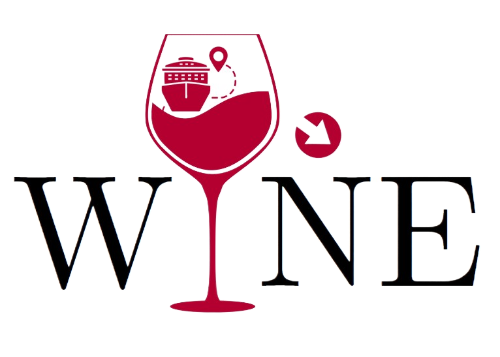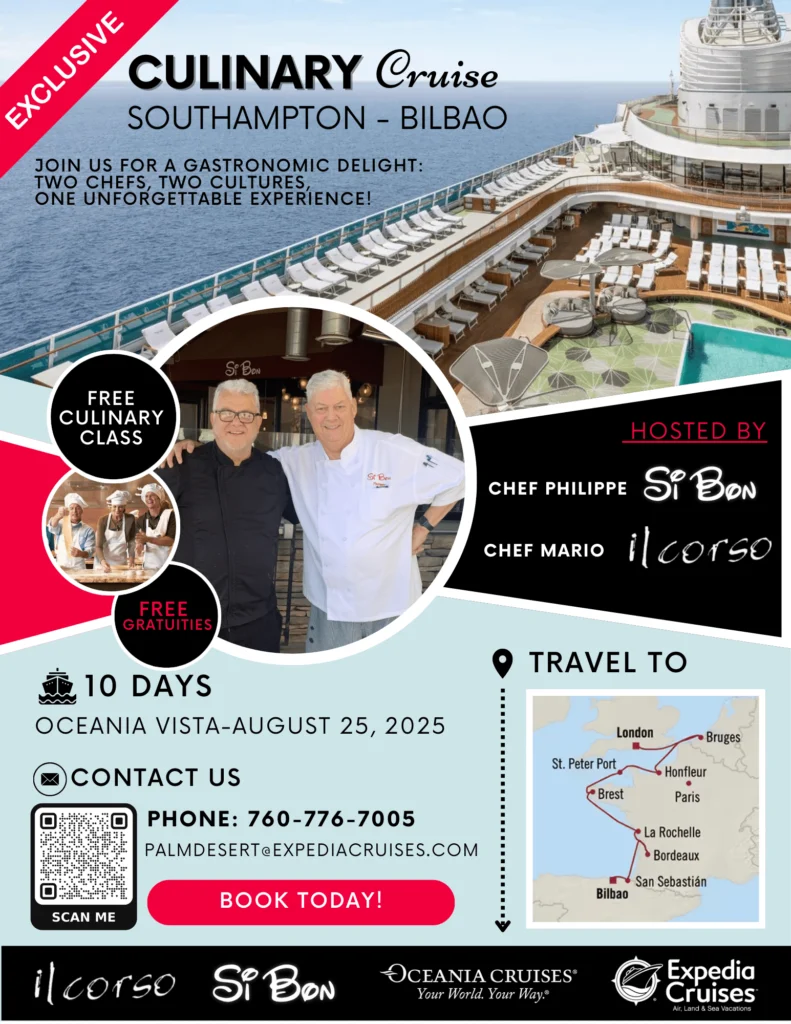Amsterdam & Netherlands | AmaWaterways Tulip Time
Overview
Amsterdam & Netherlands | AmaWaterways Tulip Time
(Apr 7 2025 – Apr 15, 2025)
7 Nights | Europe | AmaWaterways: AmaVenita
Celebrate spring in the Netherlands and Belgium when the Keukenhof Gardens and Floralia come alive. Experience the whimsical Kinderdijk windmills.
Discover the timeless traditions of Delft porcelain and revel in the medieval architectural treasures of Bruges or Ghent.
Throughout your journey indulge in Belgian chocolates, warm waffles and delicious cheeses—all while savoring the storybook atmosphere of the region.
What's Included
SHIP HIGHLIGHTS
- Lavish Twin Balcony staterooms featuring both a French balcony and an outside balcony.
- Award-Winning Dining venues, like the Main Restaurant and The Chef’s Table.
- An array of amenities such as Fitness Room, Massage services and Sun deck with Heated Pool, Walking Track Enriching Entertainment etc.
DINING
- Savor exquisite cuisine at a variety of dining venues, like the Main Restaurant and The Chef’s Table.
- You can also order delicious tapas between meals in the Main Lounge.
ONBOARD ACTIVITIES
- Public areas, including lounges and restaurants, are never overcrowded.
- With fewer guests on board, you can enjoy the luxury of space to unwind, relax and reconnect with your loved ones
- Entertainment
WELLNESS
- Are you looking for a way to stay fit on vacation?
- Hit the treadmill or lift some weights while cruising from one destination to the next.
- Massage Services
Itinerary
Embark your ship in Amsterdam for your 7-night cruise.
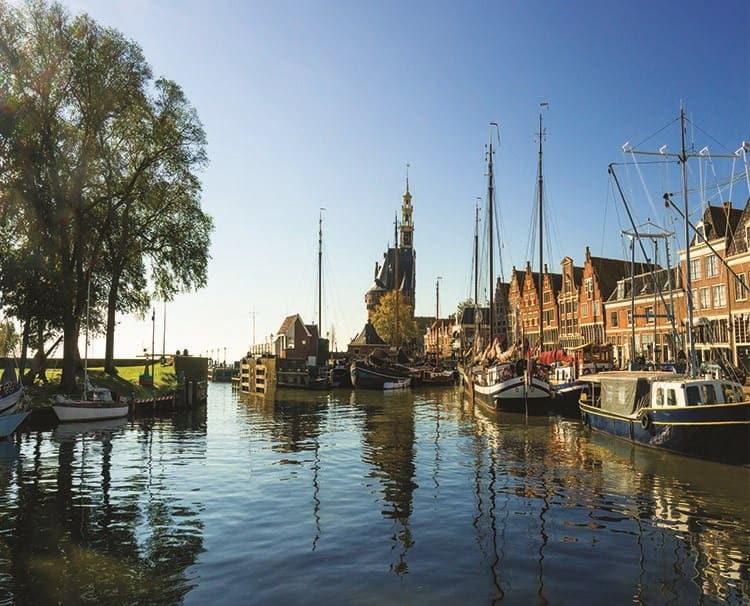
Enjoy a scenic cruise through the IJsselmeer to Kampen. Venture to the charming, canal-laden village of Giethoorn, nicknamed the “Dutch Venice.” Capture wonderful photos of the picturesque thatched-roof farmhouses, which are seemingly lifted straight from the pages of a fairytale. In the afternoon, go for a guided bike ride through the Dutch countryside or visit Flevoland’s vibrant tulip fields. (B,L,D)
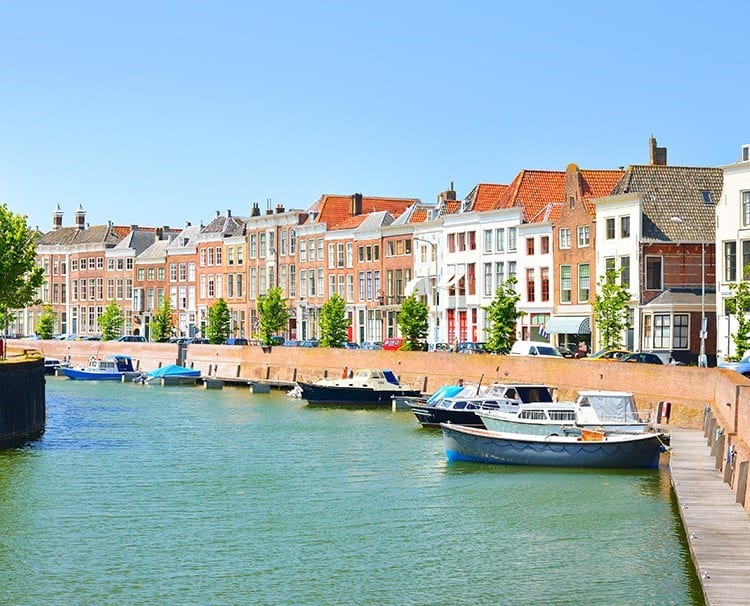
After enjoying a scenic cruise through the Delta, join a guided tour to the medieval harbor town of Zierikzee, brimming with delights, from its 16th-century stone-built Gravesteen to its lovely harborside shops and cafes. This excursion includes a photo stop at the Oosterschelde Kering, the largest storm surge barrier of the Delta Works. Alternatively, focus your tour on the history of the Delta Works at the Flood Museum. More than half of the Netherlands lies below sea level and the Delta Works were built to prevent a recurrence of the 1953 flood disaster. Prefer discovering Bruinisse on two wheels? Join our guide for an exhilarating bike tour. (B,L,D)
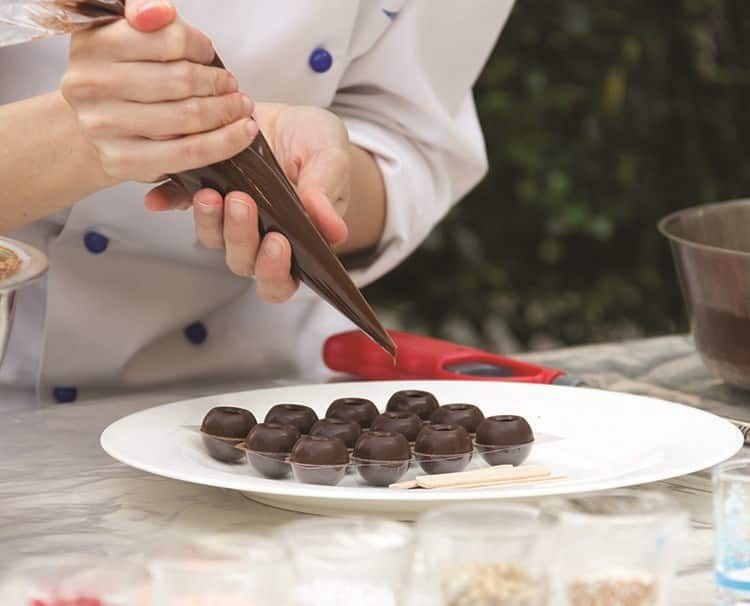
Admire Ghent’s canal-side architecture and some of its famous sights, including the Castle of the Counts and St. Bavo’s Cathedral and its Adoration of the Mystic Lamb. Those with a sweet tooth can visit a chocolate maker’s shop. After being greeted with a glass of champagne, a master chocolatier will brief you on the history of chocolate. You will also have the opportunity to taste different types of pralines – and try your hand at making your own. Alternatively, take a full-day tour of Bruges, one of the best-preserved medieval cities in Europe and a UNESCO World Heritage Site. Stroll through Grote Markt and Burg Square, visit the centuries-old Church of Our Lady with its prominent spire, and, if you choose, sample some of the local specialties, from Belgian fries to waffles to chocolate, before returning to the ship. (B,L,D)
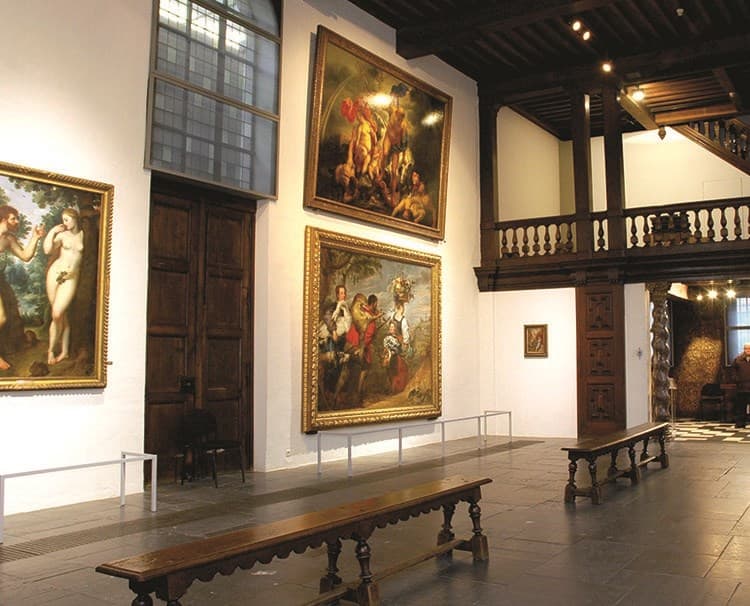
Explore this trendy city on a walking tour where you’ll see Antwerp’s Steen Castle, Grote Market and Brabo Fountain, along with the UNESCO-designated Cathedral of Our Lady. For a more active exploration of the area, join a guided bike tour. Later in the afternoon, you have a choice of two excursions. Foodies will want to go on a culinary tour to indulge in chocolate, waffles and beer. Flower lovers and gardeners can roam through the Floralia, an annual spring flower show featuring approximately one million bulbs that are hand-planted each year by the castle staff. (B,L,D)
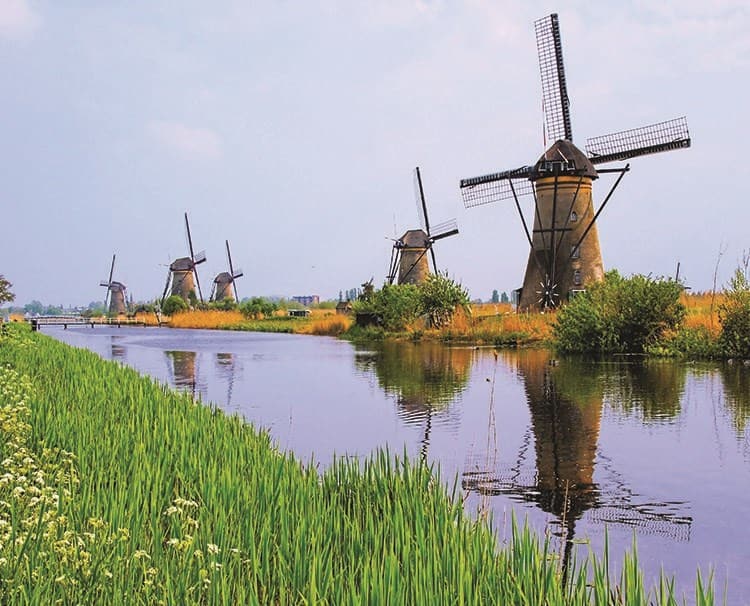
During the morning, you can go on a walking tour of Rotterdam, nicknamed the “Gateway to Europe,” and taste local specialties. Alternatively, go on an excursion to Delft, known as the home of the painter Johannes Vermeer, Delft Blue earthenware and the Royal House. While here, you’ll visit the Royal Delft Porcelain Factory and Museum. If you prefer a more active adventure, then go on a bike ride through Rotterdam and past some of its famous landmarks and architecture. In the afternoon, venture to the UNESCO World Heritage Site of Kinderdijk, a lovely village renowned for having the country’s greatest concentration of windmills, all dating from the 18th century. Visit a private windmill via electric boat. You may also pedal past the windmills from the seat of a bike. Or, if you wish to explore the history of US immigration, join us on an excursion that visits Delfshaven, where, on August 1, 1620, the Pilgrim fathers departed on their epic journey aboard the Speedwell, plus tour the FENIX Museum of Migration, a former harbor warehouse currently being transformed into this unique educational experience. (B,L,D)
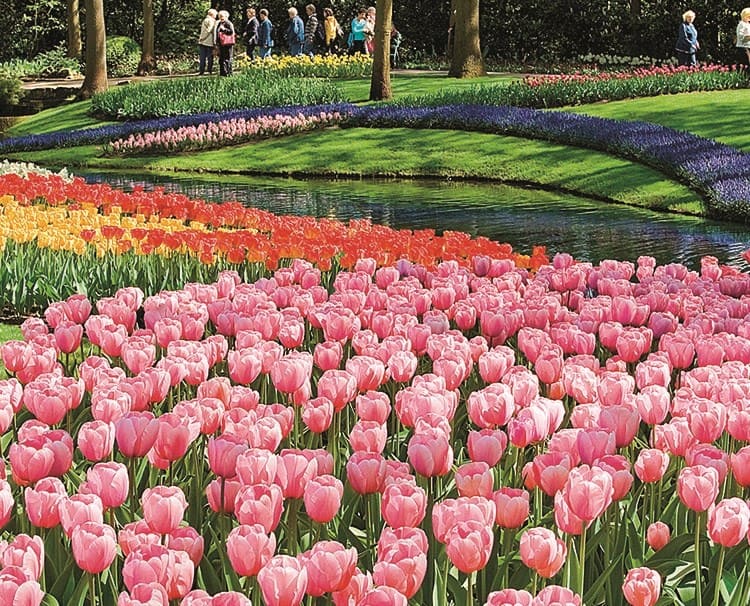
Enjoy a morning of scenic cruising before venturing out in the afternoon on a smaller boat specially designed to glide beneath the many bridges of Amsterdam. Admire the city’s historic harbor and canals, where you’ll see beautiful homes lining the water and the fabled Skinny Bridge. Alternatively, marvel at one of the most impressive public gardens in the world, Keukenhof**, which presents a spectacular display of millions of flowering tulips spread out over 70 acres. Spend time ambling through this legendary garden, open only nine weeks a year and sometimes referred to as the “Garden of Europe.” (B,L,D)
**Note: Included on most departures; An alternative tour will operate on sailings that visit Amsterdam outside of Keukenhof’s open dates.
Disembark the ship and prepare for your flight home. (B)
(B,L,D) – Indicates Breakfast, Lunch, and Dinner are included on this day.
Gallery
For Pricing and availability please contact Diane Lippa

Amenities By Location
Bruges, Belgium
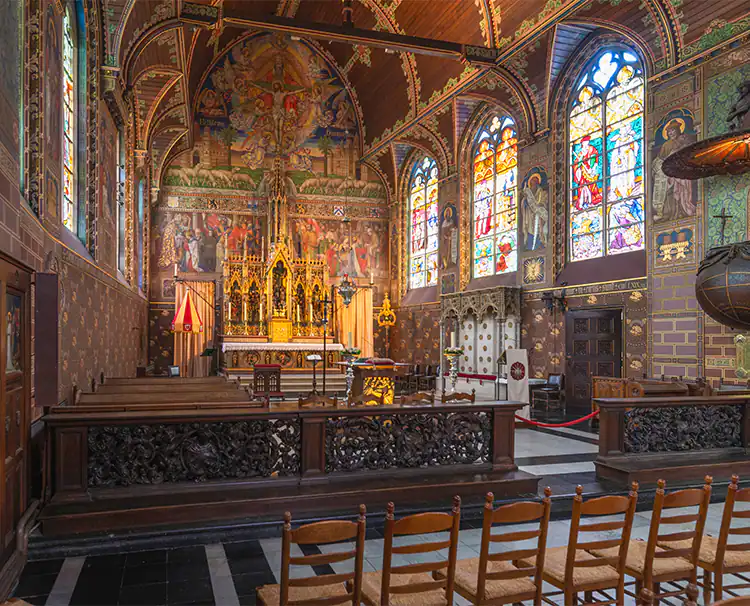
Basilica of the Holy Blood: A Prized Relic Finds its Home
One of Bruges’ most revered sites is the Basilica of the Holy Blood. The legend surrounding this sacred relic dates to the Crusades when Derek of Alsace, Count of Flanders, returned with a relic that set the the city ablaze in a frenzy: a towel claimed to have been used by Joseph of Arimathea to clean the body of Jesus Christ after his crucifixion.
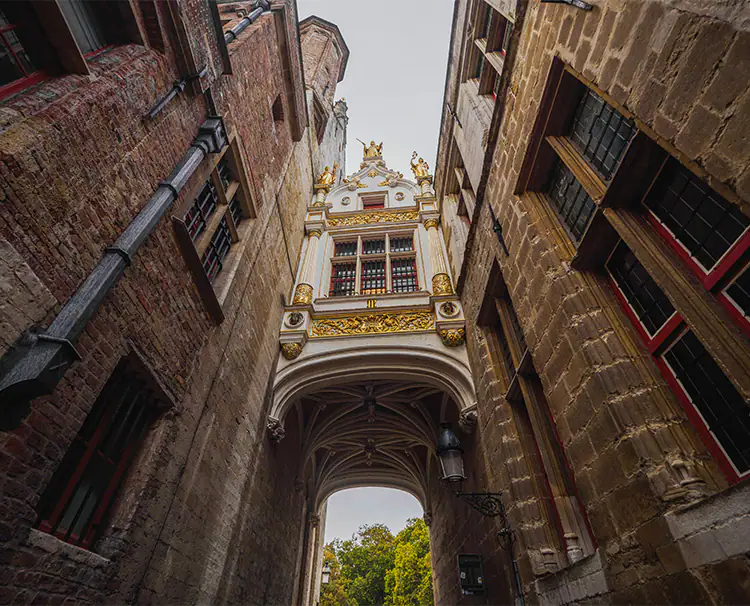
Blind Donkey Alley: A Tale of Bravery and Loyalty
The legend of Blind Donkey Alley recounts the courage and loyalty displayed by one humble donkey. This narrow alley, which sits between the Burg Square and the fish market, now stands as testament to the Bruggian character. In 1382, during the tumultuous rebellion of Ghent against the Count of Flanders, the forces from Ghent overcame Bruges at the Battle of Beverhoutsveld, seizing the city and pillaging its treasures.

Church of Our Lady: A Towering Testament to Faith and Artistry
The Church of Our Lady stands tall with the second-highest brick tower in the world at nearly 400 feet in height. Constructed over the course of 200 years beginning in the 13th century, the soaring Gothic spires of this church dominate the Bruges skyline. This architectural marvel is not only a beacon of faith but also a treasure trove of artistic masterpieces.
Netherlands, Giethoorn

Old-World Charm & Culture
On your excursion to Giethoorn, you will be greeted by sights seemingly stripped out of your favorite childhood fairytales. The architecture of Giethoorn evokes a sense of craftsmanship lost to time. The absence of motorized vehicles and the preservation of traditional building methods create an atmosphere of authenticity that is rare to find. The town’s idiosyncratic homes boast meticulously maintained thatched roofs made from reeds, a practice that has been passed down through generations. These roofs not only contribute to the village’s enchanting appearance, but also offer effective insulation against the elements, keeping the interiors cozy during the colder months.

Giethoorn: A Distinctive Dutch Escape
Giethoorn’s history dates to the 13th century when settlers dug canals into the area to extract peat for fuel. Over time, these waterways became the lifeblood of the village, shaping its unique character. The name “Giethoorn” is believed to have originated from the word “goat horn,” many of which were found in the area after a massive flood. Today, its canals are an integral part of the village’s identity, connecting the various parts of this community to each other and to its history.
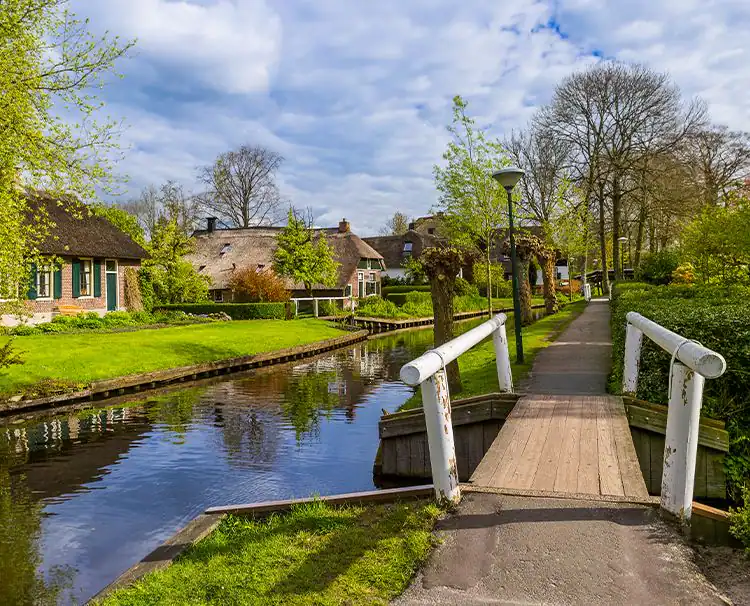
A Unique Way of Life
The most distinctive feature of Giethoorn is its near complete lack of roads. This town relies instead on its system of waterways, footpaths and cycling routes, with boating serving as the primary mode of transportation.
Visitors can experience the magic of this charming town by boarding a traditional “whisper boat,” named for their quiet electric motors, and leisurely gliding through the narrow canals, passing under quaint wooden bridges and being greeted by the serene backdrop of homes adorned with colorful gardens. The boats offer an intimate and tranquil way to explore the village’s beauty, allowing for a deeper connection to its ambiance.
Antwerp’s (Belgium)
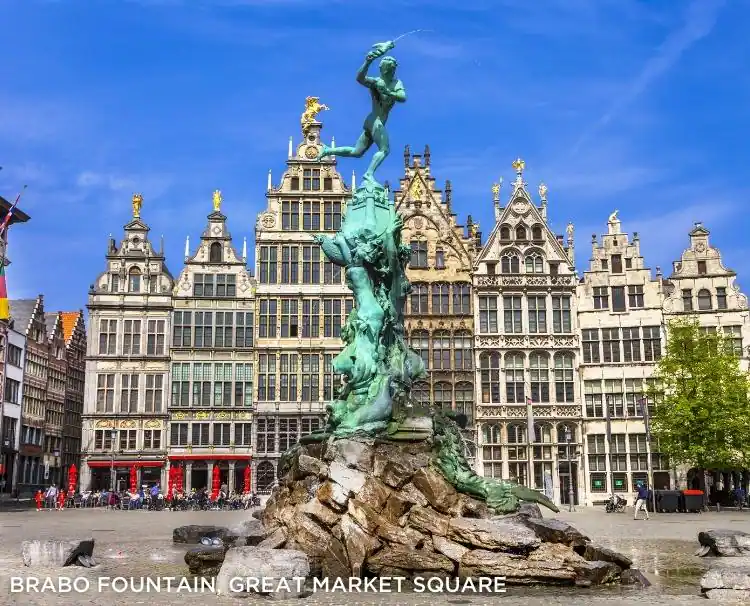
The Giant of Antwerp
According to local legend, the city got its name from Druon Antigoon, a mythical giant that lived near the Scheldt River. The giant extracted a toll from passing boatman, severing the hands of those who refused to pay. Antwerpen (Dutch for Antwerp) stems from handwerpen, meaning “hand throwing,” referencing the hands that were thrown into the river. Antigoon tormented the waterway until the young hero, Silvius Brabo, defeated the giant in battle, removing his hand and sinking it in the Scheldt River. Learn about local legends while on our included bike tour through this incredible city.

Riches and Hardships
Antwerp’s large seaport (the second largest in Europe and in the top 20 world-wide) made it a major financial center in its golden age heyday in the early 16th century. Already the sugar capital of Europe, Antwerp enjoyed a booming banking business and was known for its world-class art, culture and policies of religious tolerance. However, beginning in the mid-1500s, wars and religious revolutions (particularly the Reformation) took their toll on the city. Centuries later, Napoleon helped to revive interest in the city’s port (and the dock named after the general still remains).

A Haven for Architecture Enthusiasts
Now a thriving and vibrant city once again (the second largest in Belgium), Antwerp’s magnificent history (and periods of splendor) is on full display in buildings with varied architectural styles.
The Sint Jacobskerk, often referred to as St. James’ Church, is a 15th century Gothic Church which, because of its many years of construction, was designed with a Baroque interior. It is the final resting place of Flemish master painter Peter Paul Rubens, known for his iconic religious and mythological paintings —and even houses original works by the artist himself, including the altarpiece that stands in Rubens’ own burial chapel.
Antwerp’s (Belgium)
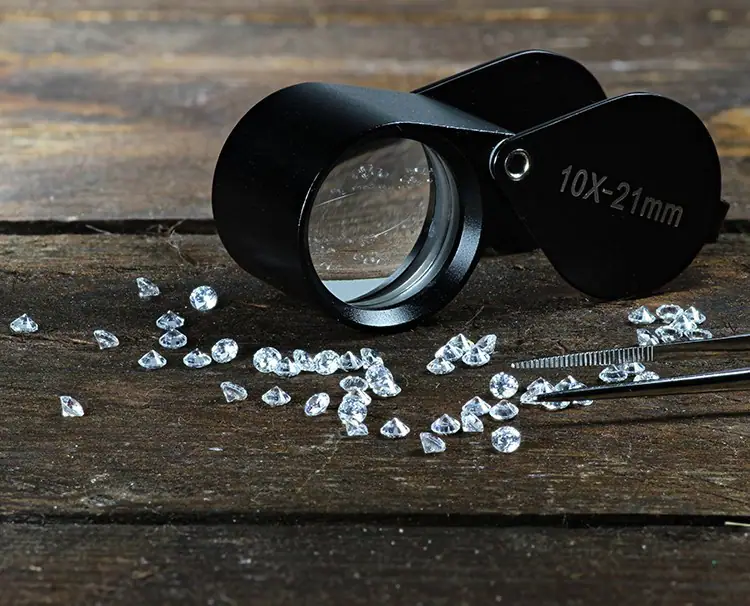
The Diamonds of Antwerp
The de facto ‘diamond capital’ earns this sparkly moniker by handling roughly 80% of all rough diamonds, 50% of all cut diamonds and over 50% of all rough, cut and industrial diamonds combined. Sixteen billion dollars worth of polished diamonds pass through the exchange each year. They also have the largest selection in the world and, therefore, are able to offer the lowest prices – often 30-70% lower prices than you’ll find at home (making it the perfect place to celebrate an exciting anniversary, birthday or other fun milestone… do you really need a reason?!).

Dutch Cheese Soup Recipe
A handful of Dutch cheese markets honor a fascinating tradition that all begins with farmers bringing their cheese to the market. The cheese wheels are stacked into barrows and carried ceremoniously into town by teams of porters wearing brightly colored straw hats. A lively bargaining ritual thus ensues involving hand-clapping and shouting between sellers and buyers, a tradition known locally as handjeklap. Only after the price is agreed upon are the wheels weighed on cheese scales and displayed for sale.

Why Dutch Tulip Time Should Not be Missed
The vibrant flower, indigenous to countries of the Ottoman Empire, bloomed with rich hues not yet seen before in Western Europe. A fascination was soon born. The en vogue bulb quickly rose to an important status symbol. While financial records are limited from the 1600s, research indicates that some precious bulbs went for as much as ten times the annual salary of a skilled craftsman and quite a bit more than the value of many homes.
